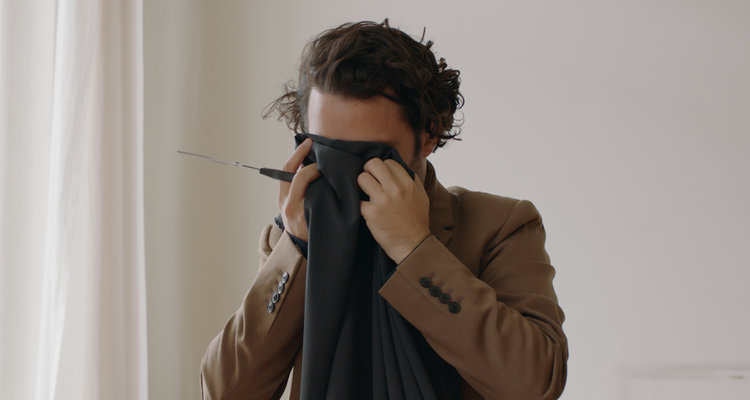Gaston Solnicki’s previous film Kekszakallu, which placed him on the festival circuit radar, resembles a documentary. A film about a group of teenage women born into wealth, Solnicki takes a landscape approach, representing their anxieties regarding a premature coming of age with loaded imagery that exposes the oppressiveness of setting. Rather than focus on significant events or major actions as films tend to do, Solnicki characterizes his ensemble by reflecting on their routine, arguing for the value inherent in mundane circumstances.

Solnicki’s new film is a documentary. Titled after a subversive Salvatore Sciarrino composition, Introduzione all’Oscuro represents a sense of absence with soft but jarring sounds that in turn resemble physiological noises. Breath and heartbeat are conveyed with violins and cellos, softly presenting the “imperceptible” through a “blind, enigmatic movement of accelerating and decelerating periodic pulsation,” as Sciarrino himself describes. It is a fitting influence for a tribute documentary about Hans Hurch, film critic, director, head of the Vienna Film Festival, and close friend of Solnicki who passed away of a heart attack last year at 64. An early shot lyrically justifies the film’s important agenda of illuminating an underappreciated cultural figure: Solnicki’s own body provides scale for the monument-tombs that embellish the graves of Austrian cultural icons such as Beethoven and Brahms; a quick series of larger-than-life gravemarkers concludes humbly on that of Hurch’s–three tiny wooden slabs a foot high.
Solnicki’s own appearance in the film is endearing, and though he does manage scenes of subdued elegiac emotion, the film never gives into the inherent sombreness that usually accompanies death. Instead, Solnicki also embodies a playful, optimistic air, applauding the man for a life well-lived even if prematurely ended. The film is a tremendously personal and deceivingly literal work, illustrating Hurch’s enigmatic life through Solnicki’s travels through Hurch’s native Austria.

Though occasionally title cards provide supplementary insight into Hurch’s life, a majority of the investigation occurs at his local haunts. Solnicki calmly and quite humorously steals a mug from a cafe that has a drink named after his dear friend, films patrons at a local movie theater watching Straub-Huillet’s Antigone, of which Hurch assisted on, and examines Hurch’s favorite painting Die Familie Schönberg at a local art museum, painted while artist Richard Gerstl was in the midst of an affair with subject Arthur Schoenberg’s wife. Objects are also invoked in order to better define Hurch’s character. Solnicki visits a piano retailer in order to purchase a specific model also owned by Hurch; in another scene, Solnicki, with the help of an employee at a boutique pen store, attempts to pinpoint the exact type of pen that Hurch used in their many correspondences. “Handwriting wasn’t merely a novelty but an everyday thing,” a title card explains, followed by images of faxes embellished by Hurch’s frail handwriting near the time of his death. Like the work of Straub-Huillet, Solnicki’s film is an epistolary work which attests to the uniqueness of handwriting as if they were fingerprints. Similarly, audio clips featuring Hurch’s voice are employed, giving more character to his personage even if they are barely audible.
Heavier political commentary regarding the current state of Austrian culture is implied. All of these moments of arts culture are contrasted albeit playfully with the country’s military complex. Perhaps the time of Beethoven and Brahms is over finally with the death of Hurch, replaced by a fascination with soldiering and a fetishization of war, as evinced by scenes of public celebration in which Panther tank balloons are available at street-side vendors while actual tanks roll down city streets accompanied by uniformed soldiers. A vintage photograph of a child taking a photograph of a beautiful beachgoer is sent to Solnicki by the dying Hurch, who notes that it reminds him of his younger friend. In contemporary Austria, a child, overjoyed, peeks through a rocket launcher as if it were a camera.
Introduzione all’Oscuro premiered at Venice International Film Festival and is streaming on Festival Scope through September 19.

